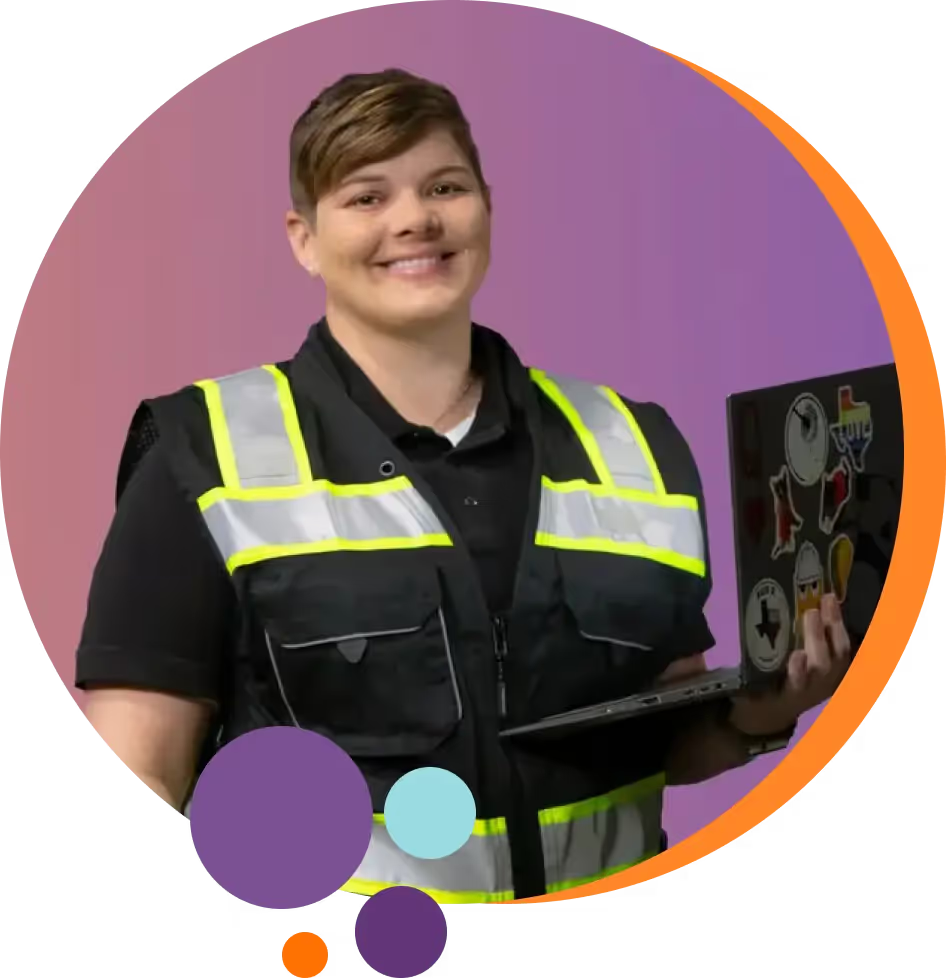Why the Trades Make Sense in Your 30s
You don’t need to be fresh out of high school to start a trade. In fact, entering the trades in your 30s can be a smart, strategic move.
Unlike many other careers, the trades offer stability, good pay, and long-term opportunity without spending years in college — making it easier to switch careers and start earning right away.
Here’s why many mid-career professionals are making the switch.
1. The trades are in demand — now and in the future.
Skilled labor shortages are one of the biggest challenges facing the U.S. job market. According to the Associated General Contractors of America, 85% of construction firms are struggling to find qualified workers:
This isn’t just construction. Electricians, HVAC technicians, mechanics, and other roles are also in high demand.
With an aging workforce, fewer young people entering trade schools, and rapid industry growth rates, the demand for tradespeople will grow faster than other professions over the next decade.
2. You’re not “starting over” — you’re bringing maturity to the table.
When you enter the trades in your 30s, you’re likely more focused, responsible, and motivated than you were at 18. Employers notice that.
Many trade employers say they prefer hiring adults with real-world experience, even if they’re new to the industry. They’ve noticed that older workers show up on time, communicate clearly, and take work seriously.
In fact, in the US, 63% of registered apprentices are over the age of 25. They often have better completion rates and long-term outcomes.
3. You can earn while you learn.
Most trades let you get hands-on experience early, often through apprenticeships or short training programs. That means you’re not stuck in a classroom for years.
In many cases, you’re working and earning quite a decent paycheck while developing your skills.
This is especially useful in your 30s, when you might not be able to pause your income or take on major student debt.
Which Trades Are Best for Career Changers?
Not every trade is the same when it comes to how easy it is to enter, how fast you can get started, or what the long-term opportunities look like.
If you're switching careers in your 30s, some trades offer smoother transitions than others — those with shorter training timelines, strong job demand, and high earning potential.
Here are some of the most accessible and rewarding trades for adult learners.
HVAC Technician
HVAC (heating, ventilation, and air conditioning) work is steady year-round, especially in regions with extreme seasonal temperatures. It combines mechanical skills with diagnostics, problem-solving, and customer service.
Training time: You can often get started in under a year through a certificate program or pre-apprenticeship.
Job outlook: The U.S. Bureau of Labor Statistics (BLS) projects steady demand for HVAC techs, with 42,500 job openings each year till 2032. With an extremely high median pay, $59,810 per year, it’s the perfect place for stability and growth.

Electrician
Electrician jobs are great because they pay well, there’s strong union support in many areas, and they have clearly defined career pathways from apprentice to journeyman to master electrician.
Plus, every building needs wiring — from homes to factories.
Training time: Around 4-5 years through an apprenticeship, but you earn while you learn.
Job outlook: Electrician jobs will experience massive growth, about 11% till 2033, as per the BLS. That’s 80,200 new openings each year.
Industrial Maintenance Technician
This is one of the most future-proof trades out there.
Industrial maintenance technicians keep the equipment running in factories, warehouses, power plants, and automated facilities.
As more systems go digital, these roles often require mechatronics skills — a mix of mechanical, electrical, and computerized control systems. If you enjoy tech and hands-on problem-solving, this is an ideal career to grow into.
Training time: You don’t need four years to get started. Many learners complete their foundational training in under six months. Courses like Unmudl’s Mechatronics Technician pathway are designed to make you job-ready quickly.
Job outlook: Industrial technicians are in high demand as U.S. manufacturing continues to modernize and grow. According to Deloitte and The Manufacturing Institute, the sector could need as many as 3.8 million new employees by 2033, half of which could remain unfilled.





















.webp)

